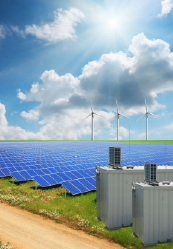Enhancing Well and Gas Production with Latin America Artificial Lift Market
The Latin America artificial lift market has developed as a crucial way to increase well productivity and improve hydrocarbon extraction in the quickly evolving world of oil and gas production. When natural pressure declines, artificial lift refers to the use of various technologies to raise crude oil or natural gas from reservoirs to the surface. Artificial lift technologies have grown significantly in significance in the Latin American oil and gas sector as a result of rising energy demand and a focus on enhancing production efficiency.
Types of Mechanism
- Pump Assisted
Pump-assisted artificial lift systems involve the use of mechanical devices to lift fluids from the well. Two primary types are:
(a) Positive Displacement Pumps: These pumps operate by displacing a fixed amount of fluid per stroke. They are well-suited for handling heavy, viscous fluids with inconsistent flow rates.
(b) Dynamic Displacement Pumps: Dynamic pumps impart energy to the fluid through rotating impellers or vanes, converting mechanical energy into kinetic energy and lifting the fluid to the surface.
- Gas Assisted
Gas-assisted artificial lift systems utilize natural gas injected into the well to reduce the hydrostatic pressure and promote fluid flow. Gas lift is an economical and versatile method that can be adjusted to various production conditions, making it a popular choice in the industry. This segment held the highest Latin America artificial lift market share in 2022.
Market Scenario
The Latin America artificial lift market has witnessed remarkable growth in recent years, driven by the region's burgeoning oil and gas industry and the increasing emphasis on maximizing production rates. The market was valued at USD 825.54 million in 2023 and is expected to grow at a CAGR of 4.3%, generating a total revenue of USD 1,208.32 million by 2032.
To Get Insights on the Latin America Artificial Lift Market: Request for a Sample Report
Factors influencing this growth are:
- Growing demand for energy resources in Latin America.
- Maturing oilfields and declining natural reservoir pressure.
- Advancements in artificial lift technologies lead to improved efficiency and reliability.
- Increasing investments in the oil and gas sector in Latin American countries.
- Rising adoption of unconventional oil and gas extraction methods.
Types of Latin America Artificial Lift
Electric Submersible Pump (ESP)
ESP is a widely used artificial lift method in Latin America. It involves a downhole pump powered by electricity to lift fluid to the surface. ESPs are particularly effective in deep and high-production rate wells.Progressive Cavity Pump (PCP)
PCP is ideal for handling heavy, abrasive, and high-viscosity fluids. It operates through a helical rotor-stator system that enables steady and consistent fluid lifting, making it suitable for challenging reservoir conditions.
Rod Lift
Rod lift, also known as beam lift, utilizes a series of rods and a surface pump jack to lift fluids. This traditional method is cost-effective and well-suited for shallow to moderately deep wells with low-to-moderate production rates. This segment boosted the Latin America artificial lift market growth in 2022.
Gas Lift
Gas lift is a popular and adaptable method in Latin America, utilizing injected gas to lighten the fluid column and facilitate fluid flow to the surface. It is particularly effective in wells with changing production conditions and high gas-to-oil ratios.
Others
Other artificial lift techniques, such as hydraulic pump systems, plunger lifts, and jet pump systems, cater to specific well and reservoir characteristics, providing tailored solutions to optimize production.
To Sum Up
The Latin America artificial lift market is expected to expand significantly over the next years as the region continues to see large expenditures in the oil and gas sector. Artificial lift technologies have become crucial in accomplishing effective and sustainable hydrocarbon extraction due to the rising demand for energy and the need to increase well productivity. Latin America is poised to maintain its position in the global oil and gas arena as the industry continues to develop and use cutting-edge artificial lift techniques.


